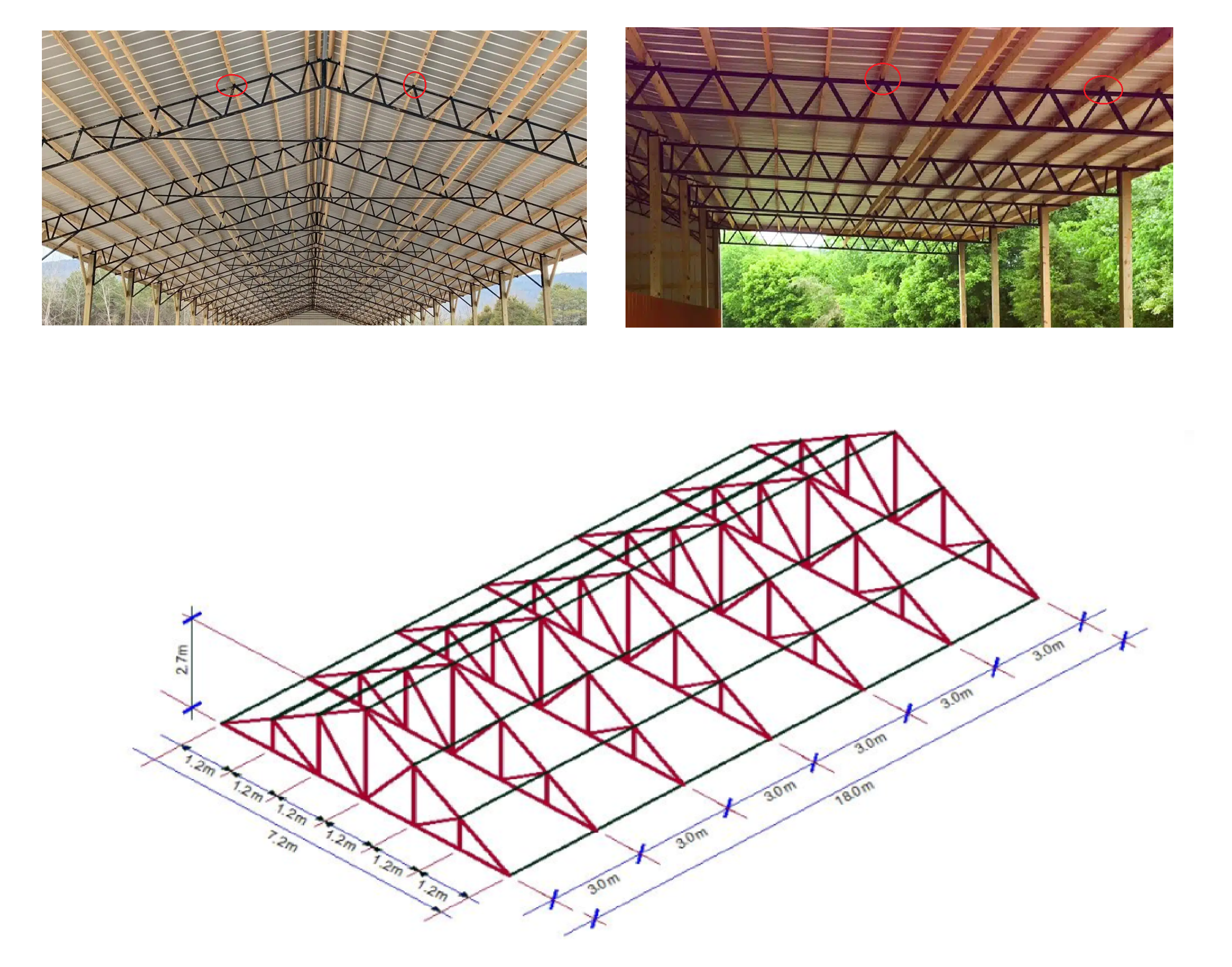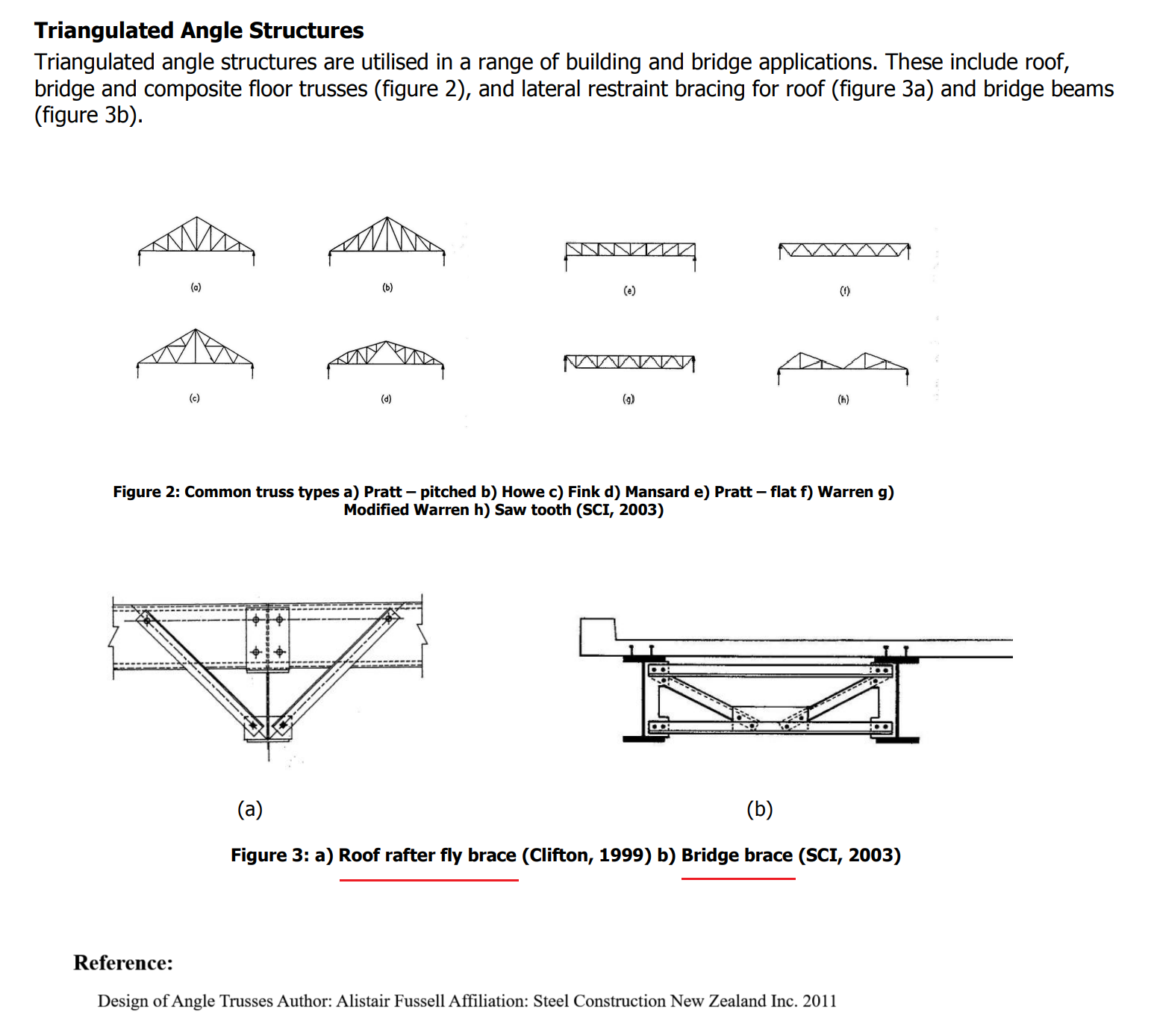Bending in Truss, Fly Braces
The differences in the weights of designs produced by MkaPEB and those by a few other engineers are not limited to portal frames and pre-engineered buildings; they also extend to truss systems. The key source of this difference lies in the design assumptions for trusses — specifically, whether the truss joints are assumed to transfer moments or whether the members are considered to carry only axial forces.
These two design approaches lead to fundamentally different outcomes. When moments are assumed to exist in the truss members, the entire truss is subjected to bending, which necessitates the use of significantly larger sections and often requires additional bracing systems, such as bridge-brace-type configurations. In contrast, designing the truss for purely axial forces allows for much lighter and more economical solutions.
Moments are assumed to exist in the truss members when:
The loads are applied directly to the truss members, as shown in figure below:

In order to avoid inducing secondary bending and shear forces in the truss elements, resulting in large members, generally engineers places purlins at the nodes of trusses rather than directly on the members.

European standard (NCCI: Design of Trusses, SN027a-EN-EU) outlines conditions under which the axial force assumption remains valid. It states that:
If roof sheeting is attached to purlins, and these purlins are positioned at the truss joints, then truss members are assumed to carry only axial forces.
However,
if the roof sheeting is attached directly to the truss members, upper chords are subjected not only to axial forces but also to bending moments.
https://www.steelconstruction.info/images/c/c4/SN027a.pdf
Moreover, for each conditions (Loading on members - Loading just on nodes) optimum bracing systems are proposed. One of the most optimum ones: Roof rafter fly brace (1999), and Bridge brace (2003).

https://scnz.org/wp-content/uploads/2020/12/MEM6301.pdf (PDF Page: 2/18)
MkaPEB strategically places purlins at the nodes of the trusses, which leads to two major advantages:
1) Axial-force-only members:
By aligning the purlins with the truss nodes, the truss members are designed to carry purely axial loads, and the joints do not transfer moments. As a result, bending moments along the truss are effectively eliminated, allowing for the use of significantly lighter member sections.
2) Use of fly braces on roof rafters:
This configuration enables the use of lightweight roof rafter fly braces to provide lateral support, which are considerably lighter and more economical compared to heavier bracing systems, such as bridge bracing.

Created with the Personal Edition of HelpNDoc: 5 Reasons Why a Help Authoring Tool is Better than Microsoft Word for Documentation